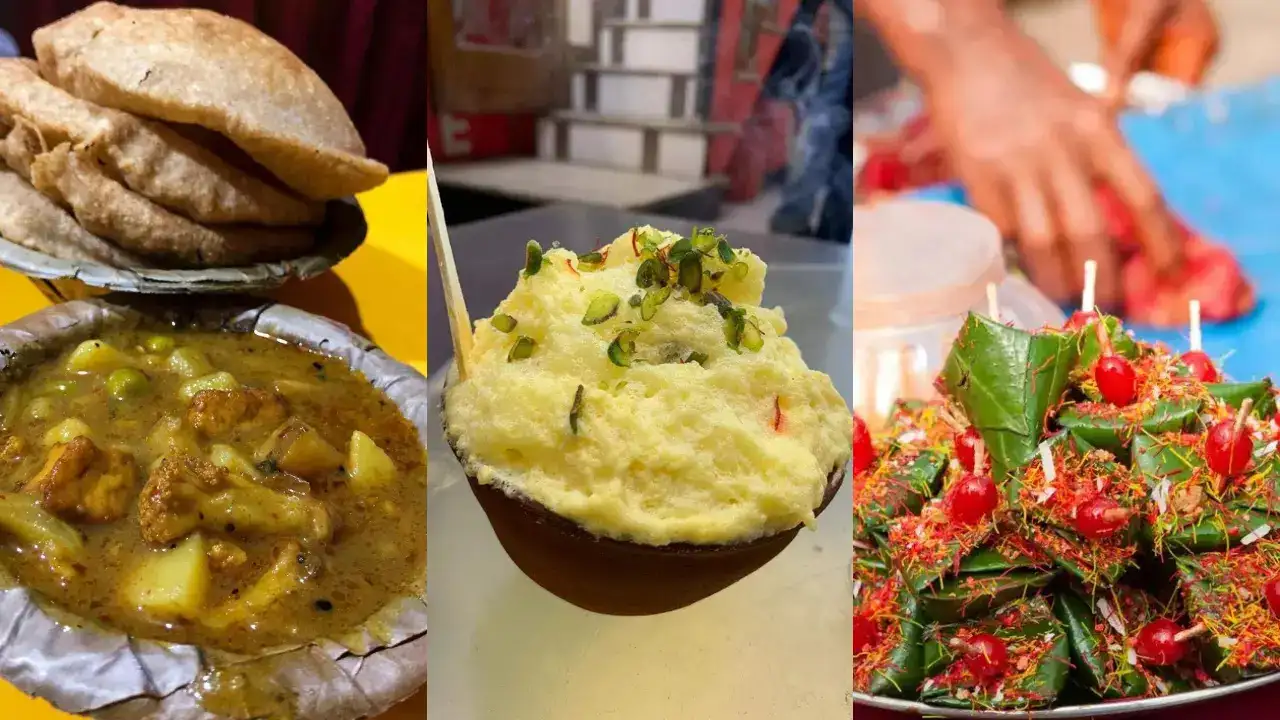Introduction
If you are looking for a deeper meaning, visit the holy city of Varanasi, in the state of Uttar Pradesh. Here thousand-year-old pyres burn the bodies of the dead to free them from the cycle of rebirth; here pilgrims plunge into the river Ganges to purify their souls and the sacred cows are guarded with kindness and care. Get lost in the city’s vegetable market and finish your tour with a visit to the Chaubepur brick factory and a quick stop at Sarnath Buddhist shrine, where Buddha began preaching after reaching enlightenment.
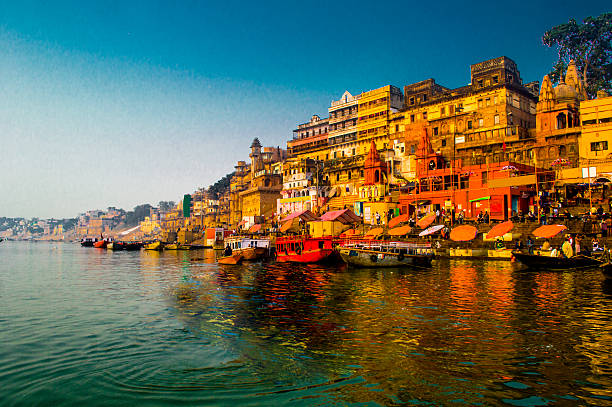
What to expect from a visit to Varanasi
It’s all wonderful in Varanasi. If you have never heard of this Indian city, you will hardly believe what you are about to read.
Inhabited for about 3,500 years, Varanasi, or Benares, is one of the oldest human settlements in the world. The city is built in the bend of the Ganges and Hindu mithology wants it to be the place where the whole world was created and the only one that will survive its destruction. This makes Varanasi the most sacred city for Hindus.
About a million pilgrims go there every year to make ablutions in the Ganges and thus wash away their sins.
Not only that, Hindus are convinced that dying in Varanasi and being burned along the western bank of the river allows them to escape samsara, the cycle of reincarnations.
1. Walking along the 84 ghats
Varanasi is located on the west bank of the Ganges. The river can be accessed by steps called Ghats. There are 84 ghats in all and they cover a distance of about 6 km. I recommend you to walk until you cover them all.
The scenes of daily life and religious devotion that take place there are absolutely the most extraordinary thing to watch: pilgrims who immerse themselves and pray; sadhus meditating or practising yoga; women doing laundry and drying clothes on the ghat steps; men shampooing and soaping in the river; children and adults enjoying splashing water for fun.
Privacy is a concept little practiced in India and Varanasi is no exception: life takes place along the banks of the Ganges!
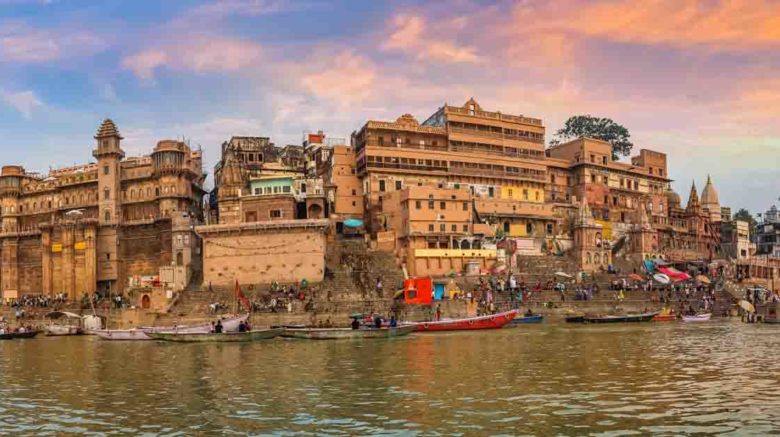
2. Take a boat ride on the Ganges
As soon as you reach the ghats in Varanasi, someone will approach you for a boat trip. Don’t be wary and accept!
The view of the city from the Ganges is sensational, both at sunrise and sunset. You can also use the boat as a taxi, when you are tired of walking. Bargain a bit on the price, but don’t overdo it.
To take a boat ride on the Ganges River, travel to Varanasi, where you can experience sunrise or evening boat tours to view the city’s ghats. Boats can be found at major ghats, such as Assi Ghat, and you can hire traditional rowboats or engine-powered boats. Book through local tour operators or official websites
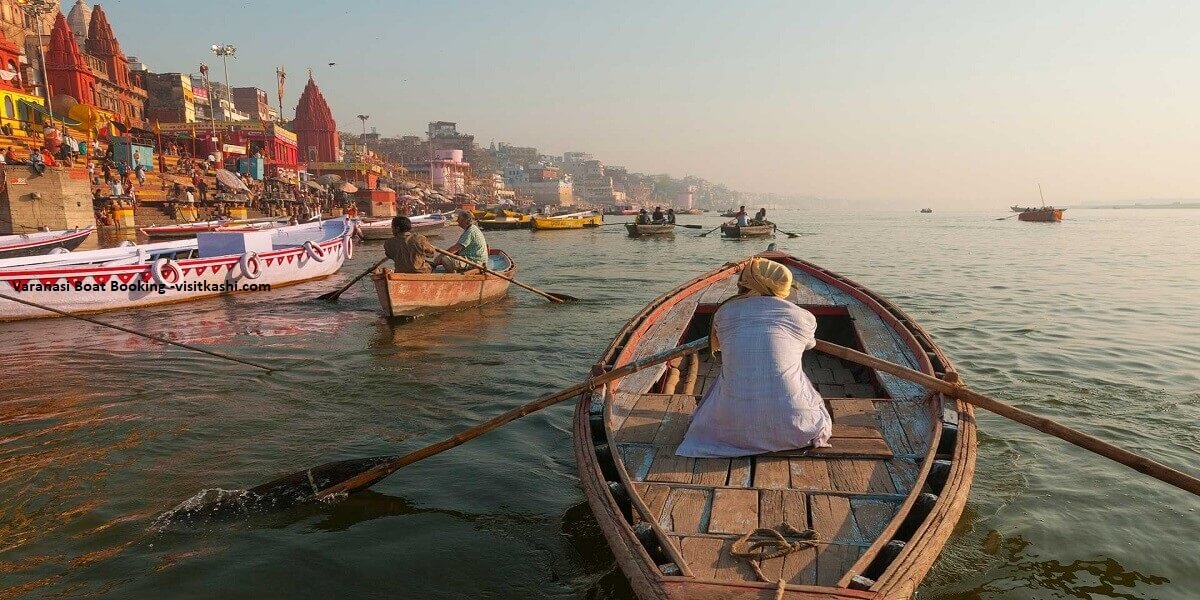
3. Watch the pyres burn at Manikarnika Ghat
Many sacred cities have arisen over the centuries along the banks of the Ganges, but only in Varanasi the crematory ovens are positioned in the urban center.
The most important cremation ghat is Manikarnika Ghat, where wooden pyres have been burning for millennia. Each cremation requires about 3 quintals of wood: the roads leading to the Ghat are filled with piles of logs that shopkeepers sell to the relatives of the deceased.
A tourist can hardly observe the pyres up close, let alone take pictures . Pay attention to the little rascals who approach you asking for a donation and above all try to have the maximum respect if you decide to approach the Ghat.
The city of Varanasi is famous for an array of things – from being the museum of temples to its elegant saris to its culinary delights. But the one thing that particularly stands out about this city is its ghats, especially Manikarnika Ghat. Here’s what makes this destination stand out:
- Manikarnika Ghat is considered to be one of the holiest ghats in India.
- It is believed that if the dead body of a person is cremated here, then the dead human’s soul finds salvation/Moksha. So, it is actually a place where the elderly across the world visit and spend their last days while enjoying the charisma of the ghat. It is believed that death is even painless at this ghat.
- At the borders of Manikarnika Ghat, Dashashwamedh Ghat and the Scindia Ghat are located.
- Talking about the history, it is one of the oldest ghats present in this city. In fact, the Manikarnika Ghat is also stated in a Gupta inscription of the 5th century. It is respected in Hindu religion too.
- This place is of historic value too. When Mata Sati gave up her life and set her body on fire after Raja Daksh Prajapati (the son of Lord Brahma) tried to disgrace Lord Shiva in a Yagya performed by Daksh, Lord Shiva took her burning body to the Himalayas. On seeing the painful sorrow of Lord Shiva, Vishnu sent the Divine chakra, which cut the body into 51 parts that fell on earth. They are known as “Ekannya Shaktipeeth”.
- At Manikarnika Ghat, there is a well, which is known as Manikarnika Kund. It was built by Lord Vishnu.
- According to the Hindu mythology, Lord Shiva along with Parvati came to Varanasi before Vishnu to grant him his wish. Vishnu dug a well on the bank of Ganga for the bath of the couple. When Lord Shiva was taking a bath, a Mani (Jewel) from his earring fell into the well, hence the name Manikarnika (Mani: Beads Karnam: Ear Angad: Ornament) was chosen for this place.
- There is another myth related to the ghat – that the ear jewel of Lord Shiva fell down while he was dancing furiously, and fell on the earth and thus Manikarnika Ghat was created.
Manikarnika Ghat is a great place of religious importance in Hindu religion.
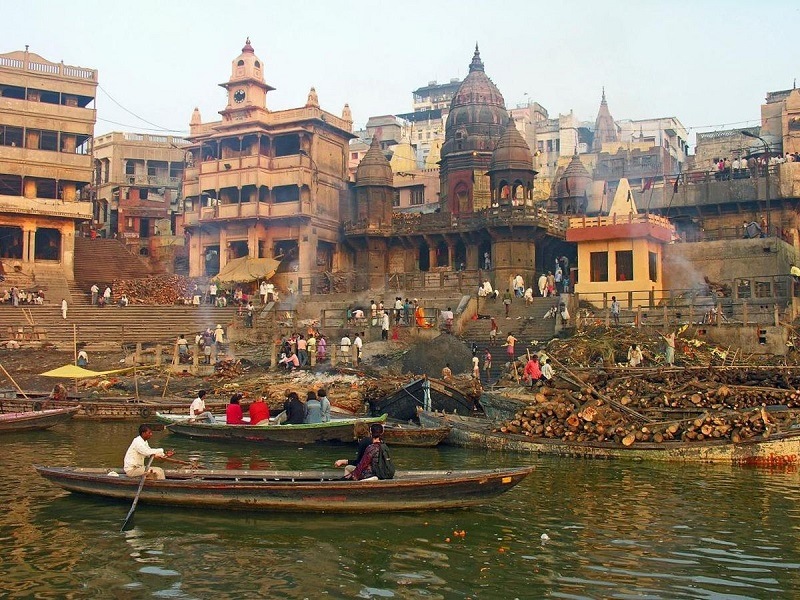
4. Attend the Ganga Aarti ceremony
Every evening, in Varanasi, you can attend a majestic ritual of thanksgiving to the river goddess, Ganga. It’s called Ganga Aarti and it takes place on the Dasaswamedh Ghat.
Here are a few notions to help you understand its significant cultural value: Ganga is the Hindu deity from which our entire galaxy, the Milky Way, originated. Hindu traditions displayed it as a river of stars. A drop fell on the earth, generating the Ganges, which gave life to the whole world.
The ceremony is followed by the entire community: some fill the steps of the square, some assist seated on boats anchored a few metres from the shore. The Pandits, the priests who perform the rite, dance to the frenetic rhythm of drums, while the air is filled with the scent of sandalwood.
The faithful light candles and put them on the riverbed, hoping that the goddess Ganga will accept their demands and fulfill them. I advise you to attend several times the Ganga Aarti, from different points of view. At first, you might feel stunned by the intensity of the sounds and smells, but I assure you that in the end, it will conquer you.
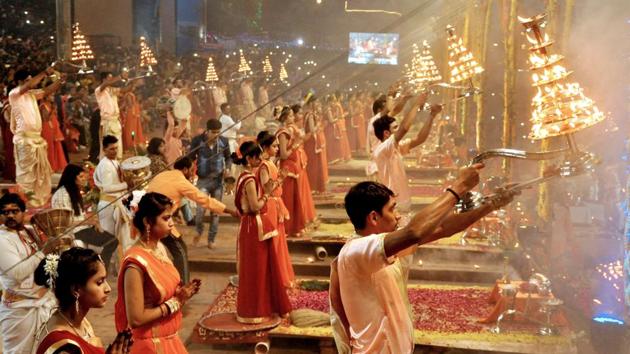
5. Try local food
Indian food is notoriously rich and tasty. If you don’t like spicy food, you can always ask to prepare a dish without spices or chili. I didn’t get any results, but it’s always worth a try!
In Varanasi the most touristy (and expensive) restaurants are on the ghats: I recommend them because they offer typical Indian dishes to safe hygienic standards. I managed to enjoy everything without having intestinal problems.
If you love some adventure and have an invincible intestinal flora, try lassi, a typical yogurt and spice drink, or enjoy street food served in small portions by street vendors. I didn’t dare so much, but I met travellers who were crazy about it and had not suffered in terms of health.
To try local food in Kashi (Varanasi), sample dishes like Kachori-Sabzi (a breakfast pastry with spiced lentils and potatoes), Chaat (tangy street snacks like Tamatar Chaat), Litti-Chokha (baked dough balls with mashed vegetables), Malaiyyo (a light, fluffy dessert), Banarasi Paan (a traditional betel leaf preparation), and Thandai (a refreshing, milk-based drink). Don’t miss Lassi (a yogurt drink) and Jalebi (a sweet, fried pastry)
